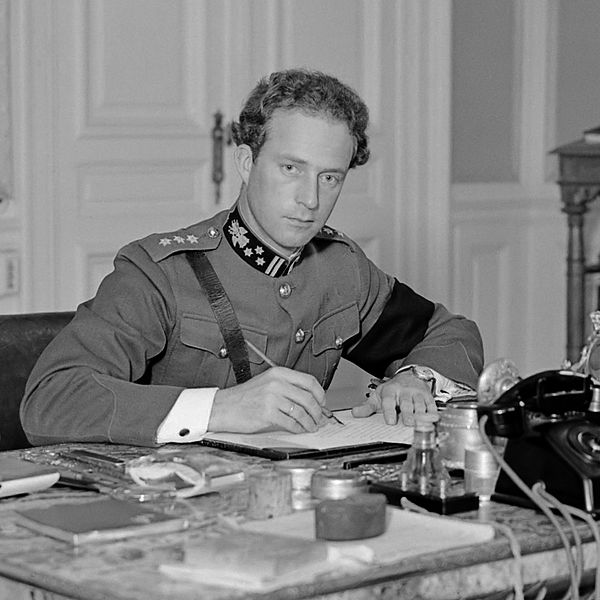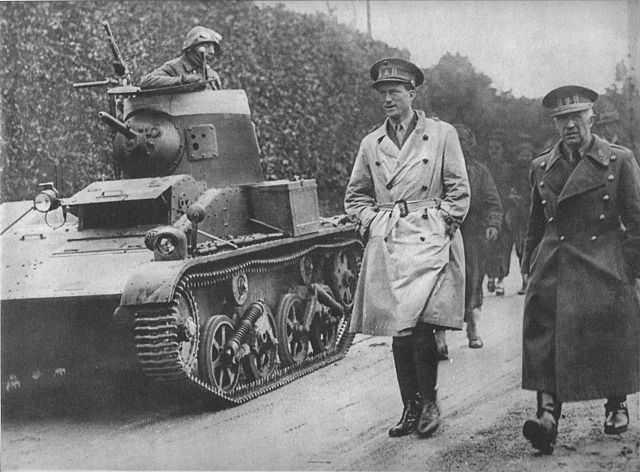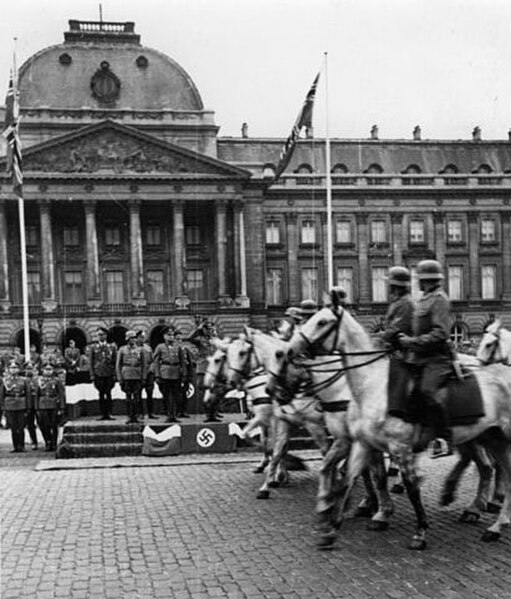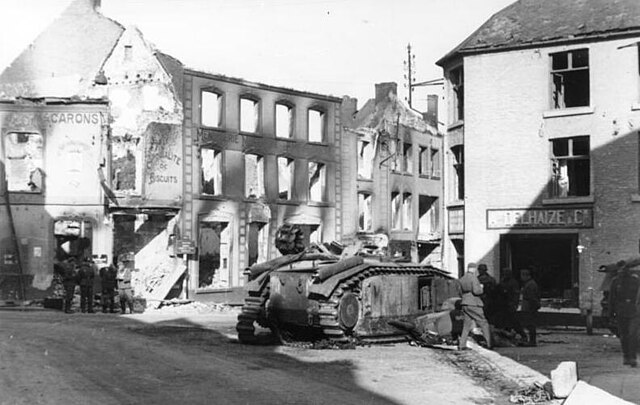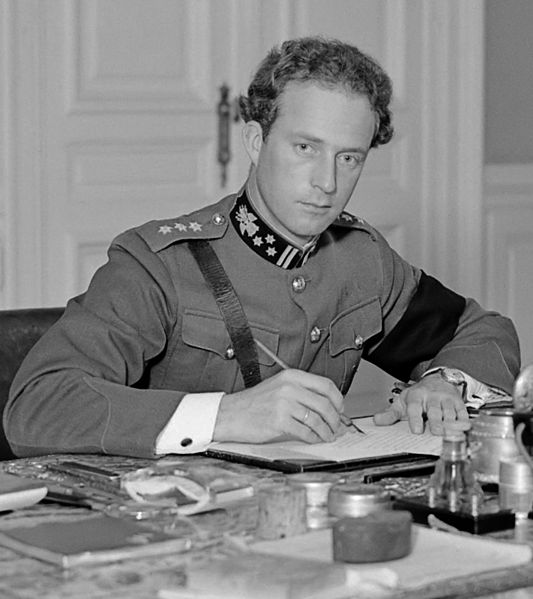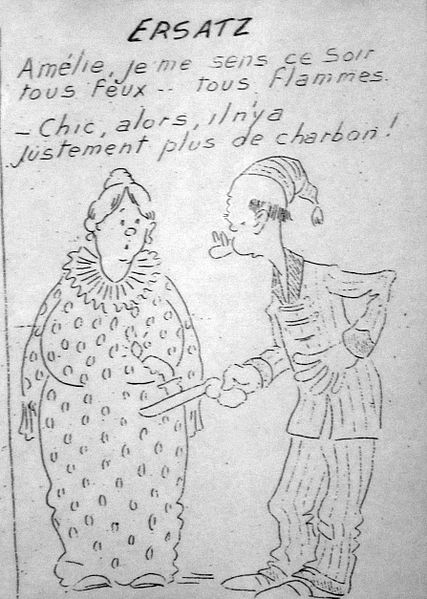German invasion of Belgium (1940)
The invasion of Belgium or Belgian campaign, often referred to within Belgium as the 18 Days' Campaign, formed part of the larger Battle of France, an offensive campaign by Germany during the Second World War. It took place over 18 days in May 1940 and ended with the German occupation of Belgium following the surrender of the Belgian Army.
Belgian soldiers under German guard following the fall of Fort Eben-Emael on 11 May 1940
A pacifist rally in Heysel, near Brussels, in 1936
King Leopold III, Belgian head of state, an advocate of the policy of neutrality
Leopold III, Belgium's monarch from 1934, reviewing Belgian troops in early 1940
German occupation of Belgium during World War II
The German occupation of Belgium during World War II began on 28 May 1940, when the Belgian army surrendered to German forces, and lasted until Belgium's liberation by the Western Allies between September 1944 and February 1945. It was the second time in less than thirty years that Germany had occupied Belgium.
German cavalry parade past the Royal Palace in Brussels shortly after the invasion, May 1940
War damage in the Walloon town of Beaumont incurred during the fighting in May 1940
Leopold in 1934 after his accession to the throne
Contemporary cartoon satirising fuel shortages in occupied Belgium. The man is saying: "Amélie, I feel...all fired up" to which the woman replies "Great, because there isn't any more coal left".



